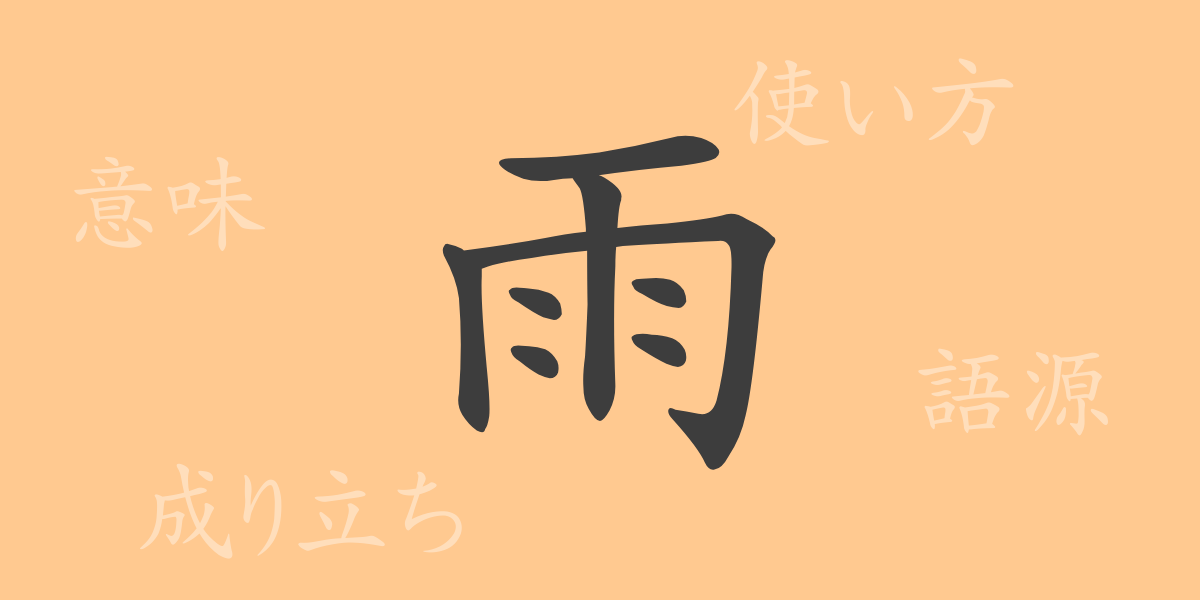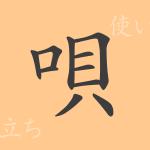“
The sight of a raindrop sliding down a window pane is one of the iconic scenes symbolizing Japan’s four seasons. Rain brings blessings to crops and is an essential element in the natural cycle. However, sudden downpours can also affect people’s lives. In this article, let’s focus on the common Japanese kanji “”雨”” (Ame) and delve deep into its origin, meaning, usage, reading, and even compound words and proverbs using “”雨””.
The Origin of 雨 (ame)
The origin of the kanji “”雨”” is ancient, with its prototype found in oracle bone script. Pictographically, it represents rain falling from clouds, with a cloud-shaped form at the top and dots representing falling rain at the bottom. This kanji was introduced from China and has been used in Japan since ancient times. Rain was a very important symbol for ancient people as a source of nurturing life and has influenced many words and expressions.
The Meaning and Usage of 雨 (ame)
“”雨”” refers to the phenomenon of water vapor cooling in the air, forming water droplets, and falling to the ground. This kanji is used to express various weather-related situations. For example, “”雨天”” ( uten) means rainy weather, “”雨量”” ( uryou) refers to the amount of rainfall, and “”雨季”” (uki) signifies the rainy season. It can also be used as a metaphorical expression, such as “”恵みの雨”” ( megumi no ame), to indicate a trigger for things to proceed smoothly or unexpected good fortune.
Reading, Stroke Count, and Radical of 雨 ( ame)
The kanji “”雨”” is considered basic knowledge in Japanese, but let’s look at its details.
- Reading: The on’yomi (Chinese reading) is “”U”” , and the kun’yomi (Japanese reading) can be “”Ame”” or “”Ama”” .
- Stroke Count: “”雨”” has a total of 8 strokes.
- Radical: Its radical is “”雨部”” (amekanmuri), a common radical seen in kanji related to weather.
Compound Words, Idioms, and Proverbs Using 雨 (ame) and Their Meanings
In Japanese, there are many compound words, idioms, and proverbs using “”雨””. These are expressions frequently heard in daily life and reflect Japanese culture and values.
For example, the proverb “”五月雨を集めて早し最上川”” ( samidare wo atsumete hayashi mogamigawa) emphasizes the importance of accumulating small profits or successes. The idiom “”雨降って地固まる”” ( ame futte ji katamaru) means that after difficulties or troubles, the situation settles down and improves. Additionally, words like “”梅雨”” (tsuyu) and “”秋雨”” (akisame) are used to indicate seasons.
Conclusion on 雨 (ame)
The kanji “”雨”” is not just a representation of a natural phenomenon; it is deeply rooted in the lives and culture of Japanese people. The rainy season, which marks the change of seasons, and the rainwater indispensable for crops have played important roles in Japan’s history and traditions. Through words and expressions, rain also functions as a symbol that influences people’s hearts in various ways. We hope that this article helps you understand the rich meanings and uses of the kanji “”雨”” and rediscover the depth of the Japanese language.
“

























